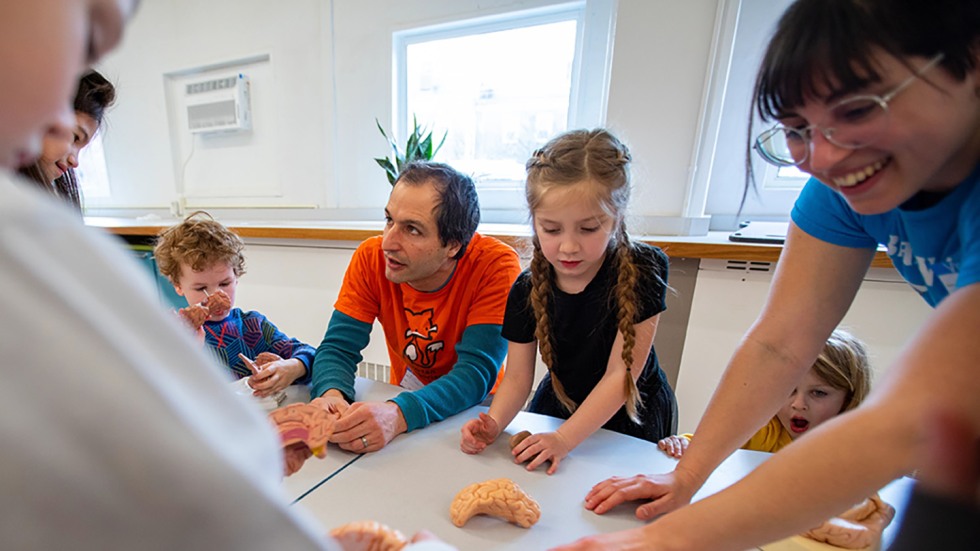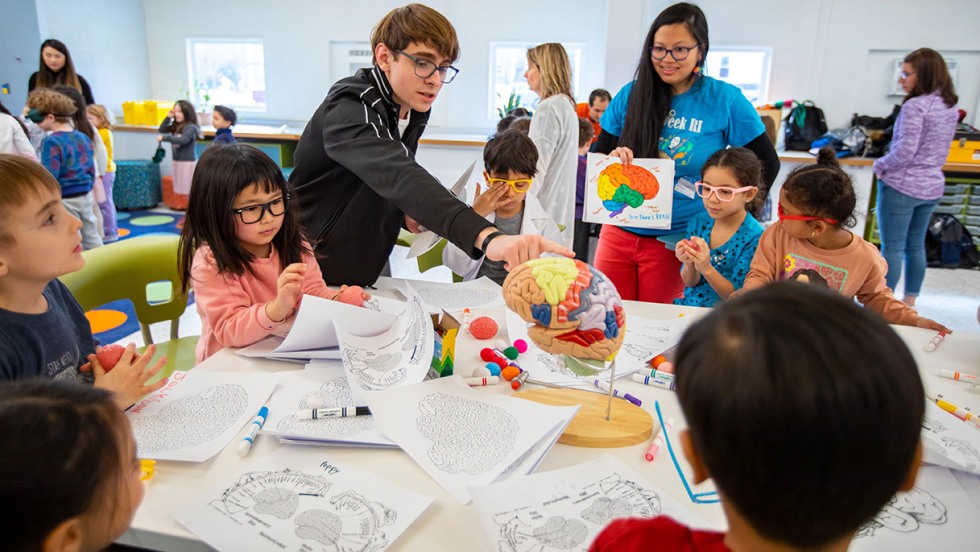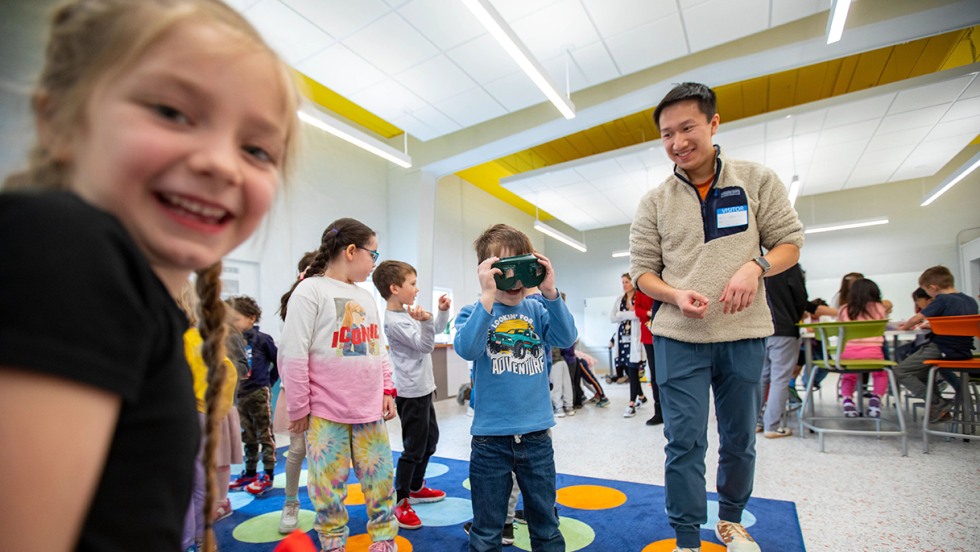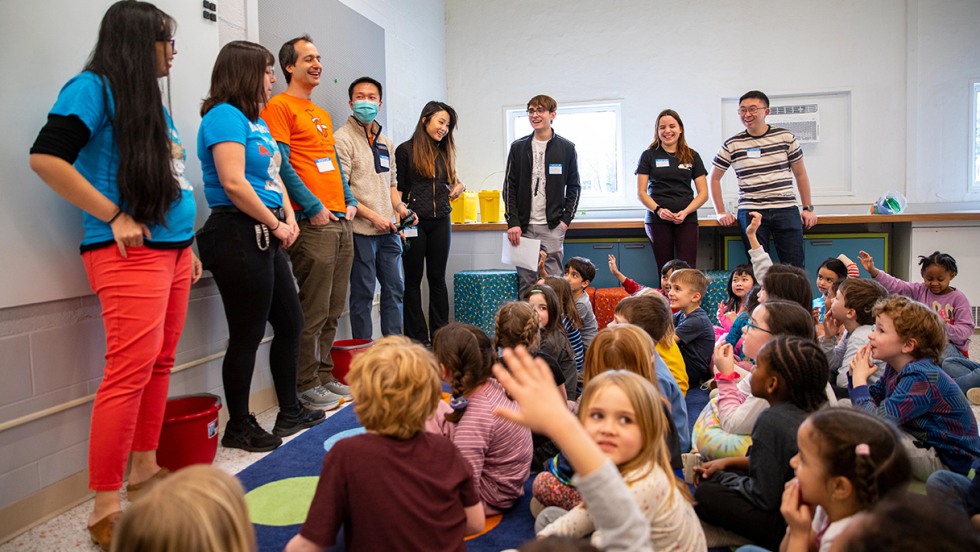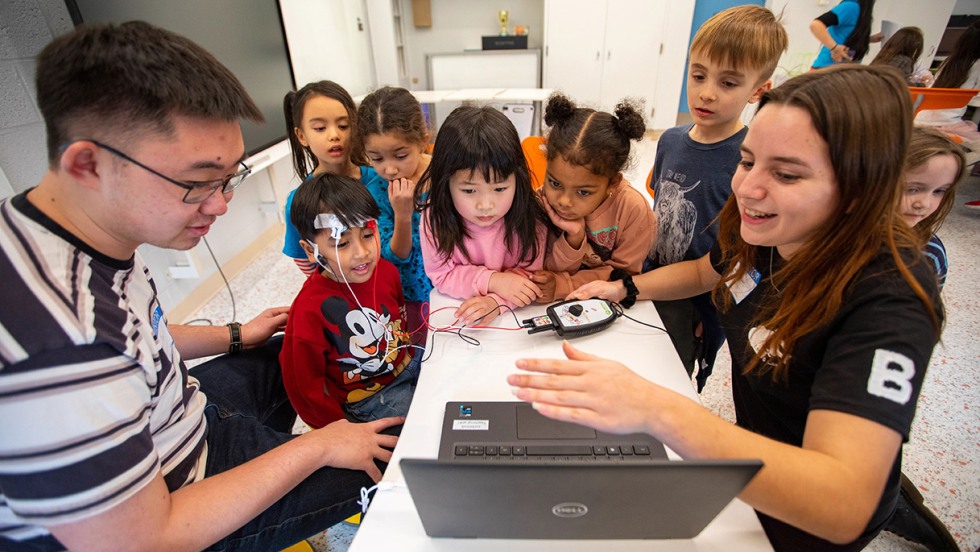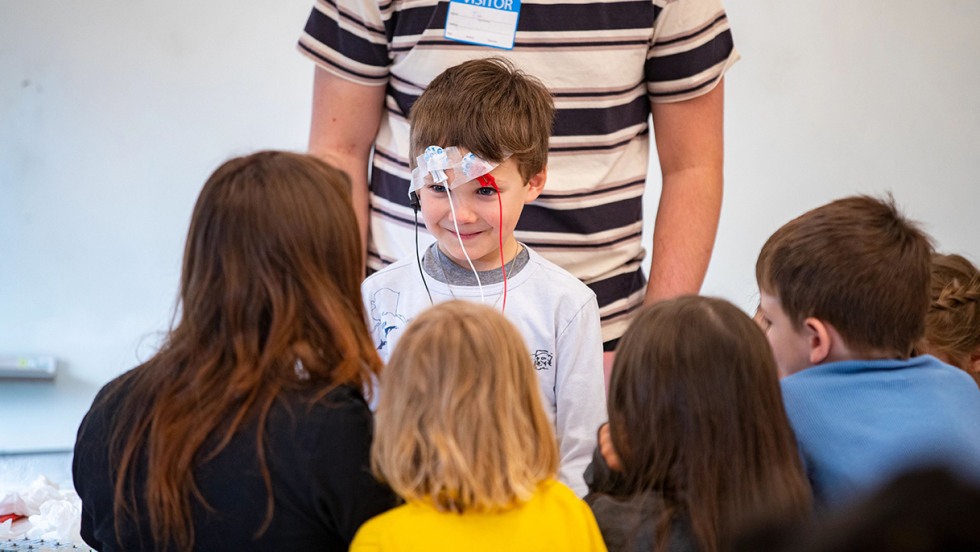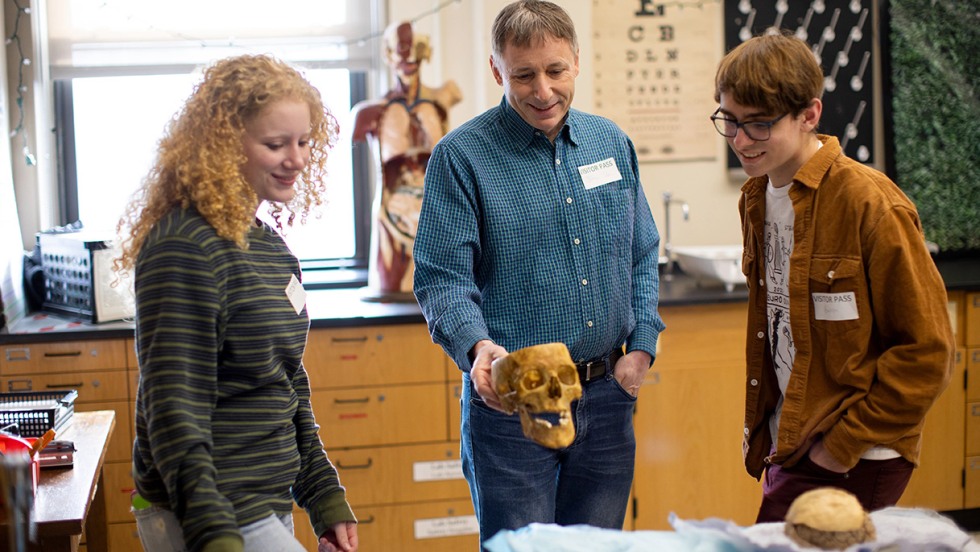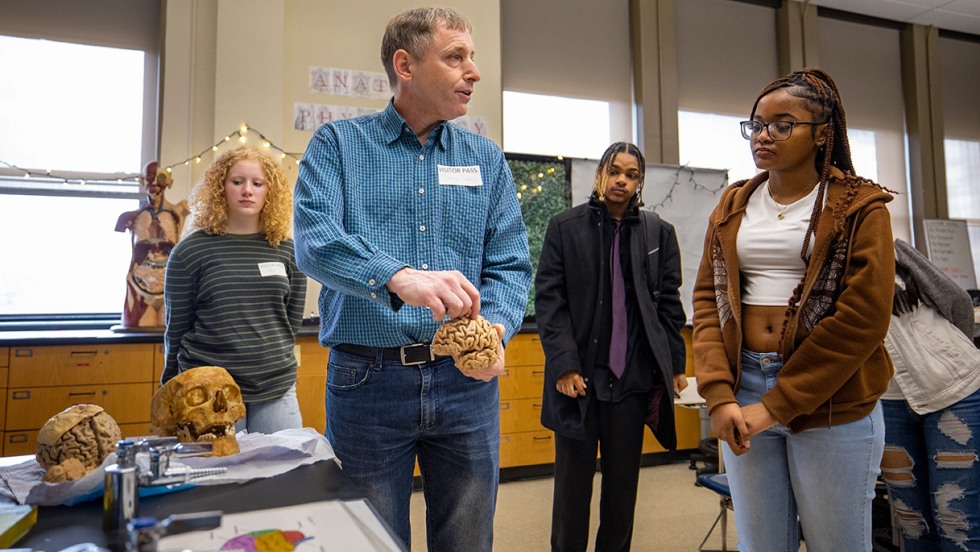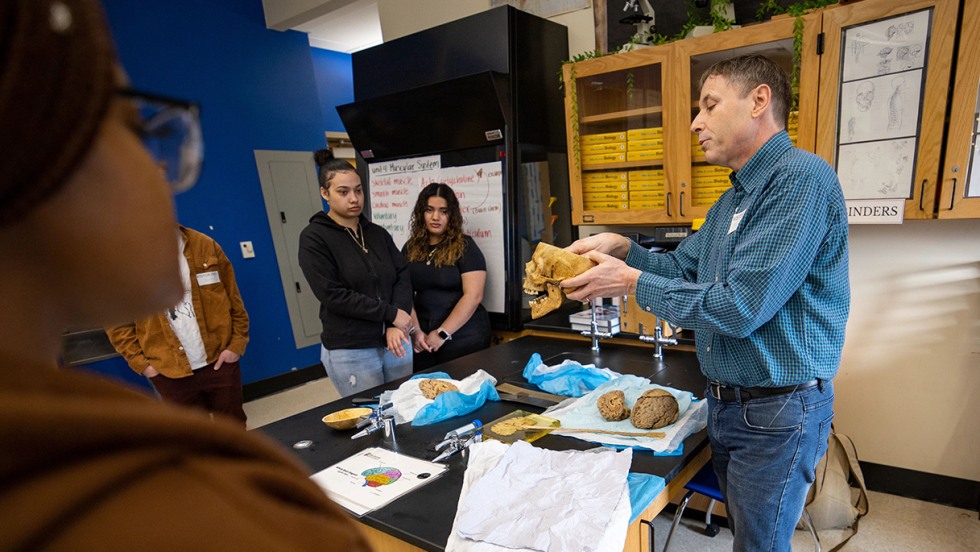PROVIDENCE, R.I. [Brown University] — When Nadira Yusif-Rodriguez heard the buzz that Brain Week Rhode Island’s K-12 classroom visits would happen again this year after a COVID-driven hiatus, she knew immediately how she’d be spending the months of February and March.
“I was like, ‘Oh yeah, it is time!” she said. “These kids are going to have a blast learning about the brain!”
A postdoctoral research associate in neuroscience at Brown University, Yusif-Rodriguez was one of many Brain Week volunteers who had as much fun during the brain-themed local classroom visits as the students.
Each spring, brain scientists ranging from first-year undergraduates to world-class faculty researchers, from Brown and other universities, fan out to Rhode Island public schools to drop some neuroscience knowledge and teach kids about the beauty of brains. During hourlong classroom visits, the volunteers lead interactive demonstrations and run educational games that encourage hands-on learning. They also share nuggets of wisdom about careers in neuroscience, discuss their own research, bust brain myths and answer questions about the mysterious mechanisms of the mind.
On a recent Friday afternoon at Vartan Gregorian Elementary School in Providence, volunteers from the lab of Matt Nassar, a Brown assistant professor of neuroscience affiliated with the Carney Institute, cheerfully corralled more than 40 kindergarteners into the school’s STEAM Room — an innovative learning space built with support from Brown in 2022. Groups of curious kids launched into activities that ranged from old-fashioned coloring to a bean bag toss with prism goggles to a demonstration of an EEG that measured kids’ brain activity when they blinked or jumped.
With one group of about 10 kids huddled around closely, Nassar and Yusif-Rodriguez used brain-shaped puzzle pieces to show how different parts of the brain work and fit together. The children peppered the volunteers with questions and after the session was through, were eager to share what they’d picked up.
“You need certain parts of the brain to help you do stuff!” shared one attentive participant.
“The back of the brain sends messages to the front!” said another budding brain scientist.
The classroom visits are part of Brain Week Rhode Island, a multi-institution educational effort held annually in March that includes brain fairs, presentations, performances and other events. Brain Week is the brainchild of Victoria Heimer-McGinn, who launched the program in 2016 when she was a postdoctoral neuroscience researcher at Brown; now, as an assistant professor of psychology at Roger Williams University, she serves as chair of the organization.
The Brain Week mission includes three goals, Heimer-McGinn said: Educate about brain science and brain health, inspire the next generation of scientists and showcase the neuroscience work happening in Rhode Island.
“The school visits are at the core of what we do,” she said. “We show kids from K-12 that the brain isn’t a scary mystery, but that it’s really fun to learn about, and might even be a viable career option for them.”
